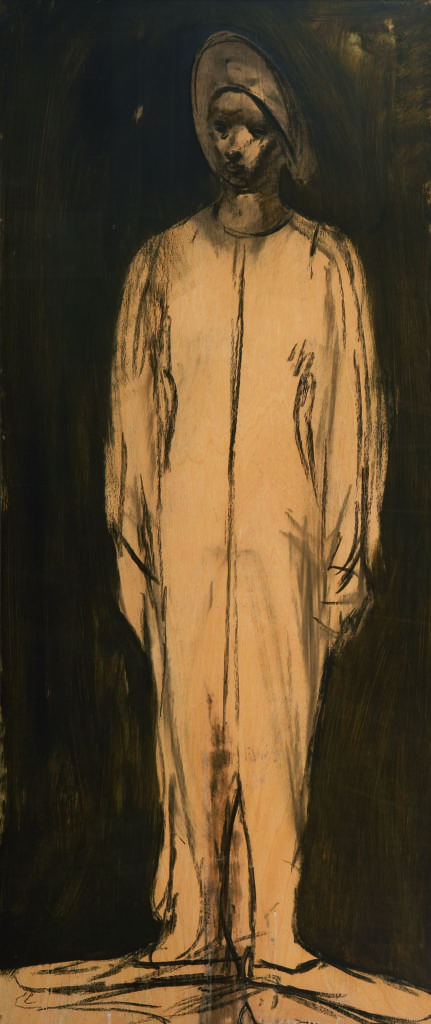Harlequin with Hat

Bjørn Ransve’s (b. 1944) artistic practice may at first glance appear very inconsistent. He has shifted from a figurative, old master style to a strict non-figurative expression, to once again approach figuration.
In terms of his subject matter, he has focused on apes and lions, harlequins and Native Americans, torn-off human limbs, abstract forms and geometrical patterns. This diversity must not be confused with indecisiveness or a lack of concentration, however. On the contrary, throughout his entire multifaceted production, the fundamental resonance in Ransve’s imagery has been unchanging; he continuously considers basic existential questions about what it means to be human, while simultaneously examining equally fundamental formal problems and means. As few other Norwegian artists Bjørn Ransve is conscious of the significance of form.
Ransve made use of the harlequin figure in drawings as early as the late 1960s, but it was not until around 1980 that he became seriously absorbed in the motif and treated it at length in a series of works. The harlequin is traditionally portrayed as an enigmatic, ambiguous character that on one side represents jocosity, and on the other loneliness, melancholy and tristesse.
In Ransve’s Harlequin with Hat the melancholic and introverted expression is particularly prominent. The elongated figure stands upright with arms pressed against his body as if to protect himself against the undefined, penetrating darkness of the background. The fragile air of tristesse and vulnerability in his face stands in stark contrast to the comically long shoes. While the face is modulated in soft semi-dark tones, the clown’s shoes and remainders of the body are rather sketchily and summarily depicted. As participant and beholder – a kind of outsider participant – the melancholic Harlequin is fundamentally ambiguous. It is no accident that the figure traditionally often symbolises the role of the artist or the creative situation.
OWG